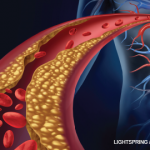NEW YORK (Reuters Health)—Diclofenac patches appear to be the most effective topical nonsteroidal anti-inflammatory drug (NSAID) for osteoarthritis (OA), according to a new systematic review and network meta-analysis.
“Topical NSAIDs were effective and safe for OA,” Dr. Weiya Zhang of the University of Nottingham and City Hospital in the UK and colleagues write. “However, confirmation of the cardiovascular safety of topical NSAIDs still warrants further observational study.”
Topical NSAIDs may reduce the risk of gastrointestinal and cardiovascular side effects associated with systemic NSAID treatment, Dr. Zhang and colleagues note in the British Journal of Sports Medicine, online February 7. However, several types of adverse effects (AEs) have been reported with topical NSAIDs as well, they add.
They identified 43 studies, including 36 randomized controlled trials in 7,900 OA patients and seven observational studies in more than 218,000 people. Pain relief was superior with topical NSAIDs overall compared to placebo, while the medications also were superior for improving function in OA patients.
Using a network meta-analysis, the authors were able to estimate the effect of 11 different topical NSAIDs compared with placebo. Diclofenac was most likely to be the best treatment in terms of pain relief, and ibuprofen cream was the second most likely.
For functional improvement, piroxicam was the most likely to be effective, followed by ibuprofen cream and diclofenac patch.
The risk of skin, gastrointestinal and cardiovascular AEs was not higher for topical NSAIDs overall compared to placebo. Only salicylate gel (odds ratio, 16.83) carried a significantly increased risk of withdrawal due to skin AEs.
“This is the first network meta-analysis to take into account all available evidence from randomized controlled trials directly or indirectly comparing topical NSAIDs in OA, thereby increasing the power of the study,” Dr. Zhang and colleagues write. “Further studies to examine the wear-off effect of topical NSAIDs for analgesia and functional improvement in OA are still warranted.”
Dr. Zhang was not available for an interview by press time.
Reference
- Zeng C, Wei J, Persson MSM, et al. Relative efficacy and safety of topical non-steroidal anti-inflammatory drugs for osteoarthritis: a systematic review and network meta-analysis of randomised controlled trials and observational studies. British Journal of Sports Medicine. 2018 Feb 7. [Epub ahead of print]
